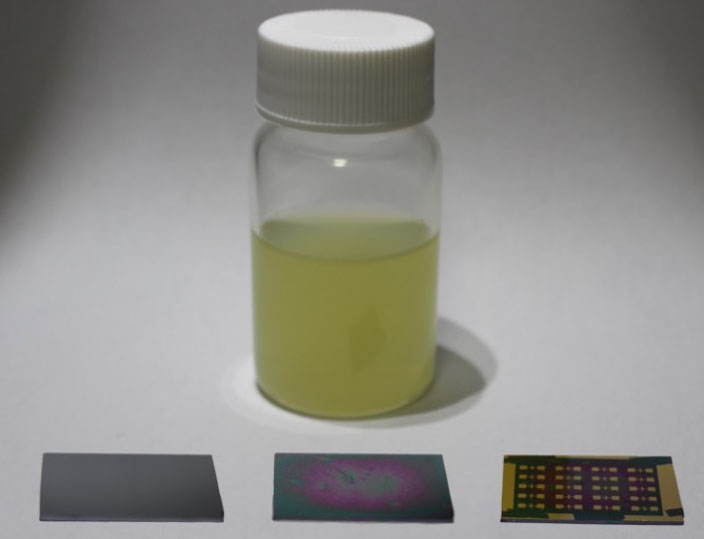| Nov 09, 2023 |
Researchers use chicken eggwhite to revolutionize 2D optoelectronic devices
(Nanowerk News) Researchers at the Materials Science Institute Madrid (ICMM), part of the Spanish National Research Council (CSIC), in collaboration with colleagues from University of Pisa, unveiled groundbreaking research that promises to reshape the field of two-dimensional optoelectronics.
|
|
In a pioneering study (npj 2D Materials and Applications, "Biodegradable albumen dielectrics for high-mobility MoS2 phototransistors")
, led by Thomas Pucher and Dr. Andres Castellanos-Gomez, they have successfully shown that chicken eggwhite (albumen) can be a very effective gate dielectric for two-dimensional materials. This innovation brings to light new possibilities for sustainable and biodegradable technology in the world of optoelectronic devices.
|
 |
| Fabrication steps for the albumen devices showing the different stages of processing and liquid albumen in a bottle. (Image: Courtesy of the researchers)
|
|
Dr. Andres Castellanos-Gomez, principal investigator on the project, explains the significance of their findings in simple terms, "It's the first time albumen has been used as a dielectric for two-dimensional materials. Being a biomaterial, it's highly relevant for applications that require biodegradable dielectrics, such as eco-friendly electronic devices."
|
|
The inspiration for this innovative approach came from previous research that had explored egg white as a dielectric for organic semiconductors. Dr. Castellanos-Gomez comments on the genesis of their idea, "There were already some articles using egg white as a dielectric for organic semiconductors, so it was a matter of delving into the literature and finding inspiration. Albumen is readily available, cost-effective, and, most importantly, biodegradable. This makes it an attractive alternative to conventional dielectrics, which often involve non-eco-friendly materials. "
|
|
But what sets this research apart is the practical application and potential benefits of using albumen as a gate dielectric in optoelectronic devices. As Thomas Pucher, lead researcher on the project points out, "Egg white has a very high dielectric constant and also works as an ionic conductor, allowing us to achieve very high electron mobilities in our transistors."
|
|
The implications of this research extend to both the performance of optoelectronic devices and their environmental impact. Thomas Pucher emphasizes, "We have fabricated phototransistors, achieving a photo response figure of merit comparable to the state of the art. Furthermore, the biodegradability of albumen enables us to manufacture devices with a lower environmental footprint. Our applied fabrication techniques can be extended to any other two-dimensional material, opening the opportunity for many different device architectures in the future."
|
|
This pioneering approach to using albumen with van der Waals materials hints at a promising avenue for future research and development. Dr. Castellanos-Gomez reflects, "When different material classes are combined, we often discover fascinating properties. In this case, the ionic gating of egg white provides exceptionally high mobility in our transistors."
|
|
The research by the Spanish National Research Council (CSIC), is poised to revolutionize the field of optoelectronics, opening the door to more sustainable and eco-friendly technology. As the world seeks solutions to reduce its environmental footprint, this innovative study offers a glimpse of a greener and more efficient future for electronic devices.
|

